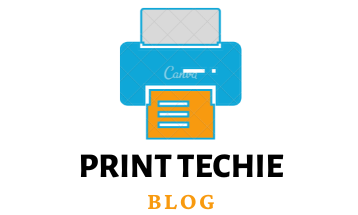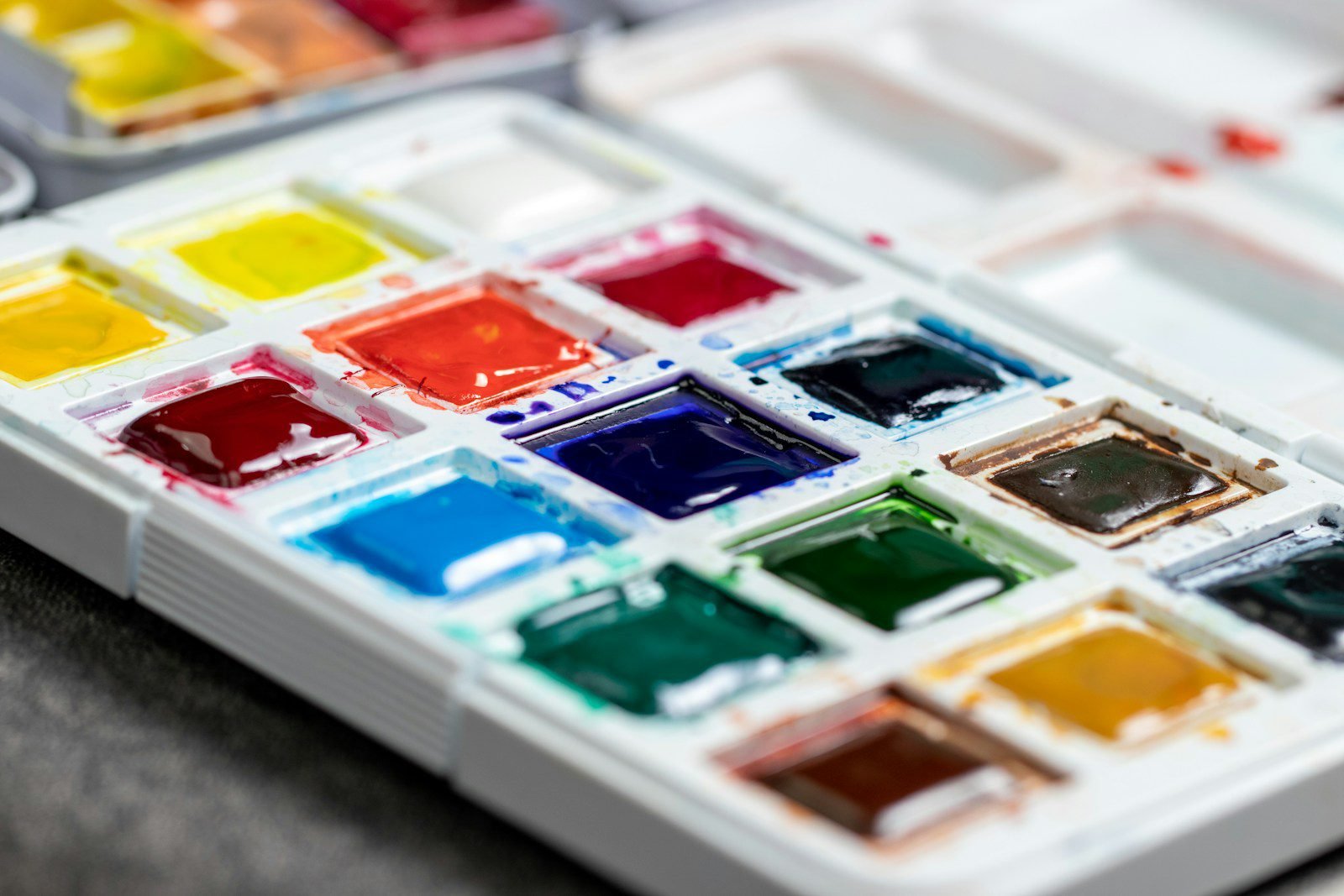Eco solvent ink vs sublimation ink are two types of ink that are commonly used for printing. Eco solvent ink is made from a mixture of mild solvents and pigments, and it works well with a lot of different materials. Sublimation ink is a special type of ink that is used with a heat press to transfer the ink onto hard surfaces.
Sublimation ink offers incomparable, full-colour prints that are sure to amaze. Remember, though, that it can only be employed on select materials. In this comparison of eco-solvent ink vs sublimation ink, we will explore the main differences between these two types of ink and consider the appropriate uses for each and the cost and environmental impact of each.
Eco Solvent Ink vs Sublimation Ink – Comparison
Eco Solvent Ink:
Eco solvent ink is a type of printing ink that is made from a blend of mild solvents and pigments. It uses solvents that are not as harmful to the environment. Eco solvent ink works well with different materials, like vinyl, banner media, and clear film. It also does not fade or smudge easily when it gets wet or when exposed to UV light.
Eco solvent ink is a good choice for outdoor banners, vehicle graphics and trade show displays. However, it may cause harm to those who are close by when it is being printed because it releases VOCs. Also, eco-solvent ink can worsen when exposed to bad weather or sunlight. This will make your prints less bright and fade faster than with other methods.
Advantages of Eco Solvent Ink:
Compatibility with a wide range of materials:
Eco solvent ink is a type of ink that can be used for printing on many different materials. This is because it has adhesive properties, which means it can stick to vinyl, banner media, and clear film. This makes eco-solvent ink a very versatile option for your various printing needs.
Durability:
Eco solvent ink is resistant to fading and smudging when exposed to water and UV light, making it a long-lasting choice for outdoor printing applications.
Vibrant colours:
Eco solvent ink can produce vibrant, eye-catching colours that can be used to create highly visible and attractive prints.
Fast drying time:
Eco solvent ink dries quickly, which can be beneficial in fast-paced printing environments.
Cost-effective:
Eco solvent ink is generally less expensive than other specialized inks, such as UV-cured inks.
Easy to use:
Eco solvent ink is easy to apply and work with, making it a good choice for users who are new to printing.
Disadvantages of eco-solvent ink:
Here are some of the main disadvantages of eco-solvent ink:
Health risks:
Eco-solvent ink releases volatile organic compounds (VOCs) into the air during printing, which can harm human health if inhaled in large quantities.
Fading over time:
Eco solvent ink can fade or degrade over time, particularly when exposed to extreme environmental conditions such as prolonged exposure to sunlight or extreme temperatures.
Limited colour range:
Eco solvent ink cannot produce the full range of colours possible with other types of ink, such as CMYK (cyan, magenta, yellow, black) ink or six-colour ink.
Limited compatibility with certain materials:
Eco solvent ink may not bond well with certain materials, such as certain types of plastics or polycarbonate.
High environmental impact:
The production and disposal of eco-solvent ink can harm the environment due to the use of solvents and pigments.
Compatibility issues with certain printers:
Eco solvent ink may not be compatible with all types of printers and may require specialized equipment.
Sublimation Ink:
Sublimation ink is a type of printing pigment that can create amazing prints on hard surfaces when used with a heat press machine. It is made from a blend of pigments and special sublimation dyes, designed to turn into a gas when exposed to high heat. The high heat of the heat press causes the sublimation dyes in ink to vaporize, and the vapour is then absorbed into the pores of the material being printed on. Once the material has cooled, the vaporized dye solidifies and becomes a permanent part of the material. Sublimation ink produces high-quality, full-colour prints resistant to fading and smudging. It is commonly used for printing on hard surfaces such as ceramic tiles, metal, and polyester fabric. However, it is limited in the range of materials it can use, as the material must have pores that can absorb the vaporized dye. Additionally, the use of sublimation ink requires the use of special equipment, such as a heat press, and can be more expensive than other types of ink.
Advantages of Sublimation Ink:
High-quality, full-colour prints:
Sublimation ink can produce vibrant, high-quality prints with various colours.
Fade and smudge-resistant:
The prints produced with sublimation ink are resistant to fading and smudging, making them long-lasting and durable.
Ability to print on hard surfaces:
Sublimation ink allows for printing on hard surfaces such as ceramic tiles, metal, and polyester fabric, which is impossible with other types of ink.
High resolution:
Sublimation ink can produce prints with a high level of detail and resolution, resulting in clear and sharp images.
Vibrant colours:
Sublimation ink can produce rich, vibrant colours that are highly visible and attractive.
Customization options:
Sublimation ink allows for a high level of customization, as it is possible to create prints with a wide range of colours and designs.
Disadvantages of Sublimation Ink:
Limited range of materials:
Sublimation ink can only be used on materials that can absorb the vaporized dye. Sublimation ink can only be used on a limited number of materials, which limits its potential applications.
Special equipment required:
The use of sublimation ink requires the use of special equipment, such as a heat press, which can be costly and may not be practical for all users.
High cost:
Sublimation ink is generally more expensive than other types of ink due to the specialized nature of the ink and the need for special equipment.
Complex process:
The process of printing with sublimation ink is more complex than with other types of ink and requires a high level of skill and expertise to achieve good results.
Limited outdoor use:
Sublimation ink is not suitable for outdoor use, as it is not resistant to UV light and can fade or degrade when exposed to the elements.
Limited colour range:
While sublimation ink can produce a wide range of colours, it cannot match the full range of colours possible with other types of ink, such as CMYK (cyan, magenta, yellow, black) ink.
Comparing Eco-solvent and Sublimation ink:
A summary of the main differences between eco-solvent ink Vs sublimation ink:
- Eco solvent ink is made from a blend of mild solvents and pigments, while sublimation ink is made from pigments and special sublimation dyes.
- Eco solvent ink can be used on a wide range of materials, while sublimation ink is limited to materials with pores that can absorb the vaporized dye.
- Eco solvent ink produces prints resistant to fading and smudging when exposed to water and UV light. In contrast, sublimation ink produces prints resistant to fading and smudging but is unsuitable for outdoor use and can be affected by UV light.
A discussion of the appropriate uses for each type of ink:
- Eco solvent ink is well-suited for printing on a wide range of materials, including vinyl, banner media, and clear film, and is particularly suitable for outdoor printing applications.
- Sublimation ink is best suited for producing high-quality, full-colour prints on hard surfaces such as ceramic tiles, metal, and polyester fabric and is particularly well-suited for indoor use.
A consideration of cost and environmental impact:
- Eco solvent ink is generally less expensive than sublimation ink and has a lower environmental impact due to mild solvents. However, the production and disposal of eco-solvent ink can still harm the environment due to the use of solvents and pigments.
- Sublimation ink is more expensive than eco-solvent ink and requires special equipment, which can increase the overall cost. The environmental impact of sublimation ink is not well understood, but the use of specialized dyes and heat-based processes may have negative consequences.
What are the main differences between eco-solvent ink and sublimation ink?
The main differences between eco-solvent ink and sublimation ink include the range of materials they can be used on, the quality and durability of the prints produced, and the cost and environmental impact. Eco solvent ink can be used on a wide range of materials, while sublimation ink is limited to materials with pores that can absorb the vaporized dye.
What should be considered when choosing between eco-solvent ink vs sublimation ink?
When choosing between eco-solvent ink vs sublimation ink, factors include the materials used, the desired print quality and durability, and the cost and environmental impact. Eco solvent ink is generally less expensive than sublimation ink.
So, there are two types of printing ink, eco-solvent ink vs sublimation ink. They are used for different purposes and have different advantages and disadvantages. Eco solvent ink is a versatile choice that can be used to print on a wide range of materials. It produces durable prints that can withstand outdoor conditions. Sublimation ink is best suited for producing high-quality, full-colour prints on hard surfaces. It is also better for indoor use. The decision of which type to use should be based on the user’s individual needs, cost considerations, and environmental consciousness, as well as what type of materials must be printed.
References:

